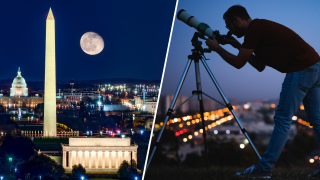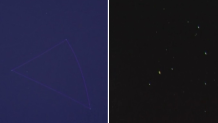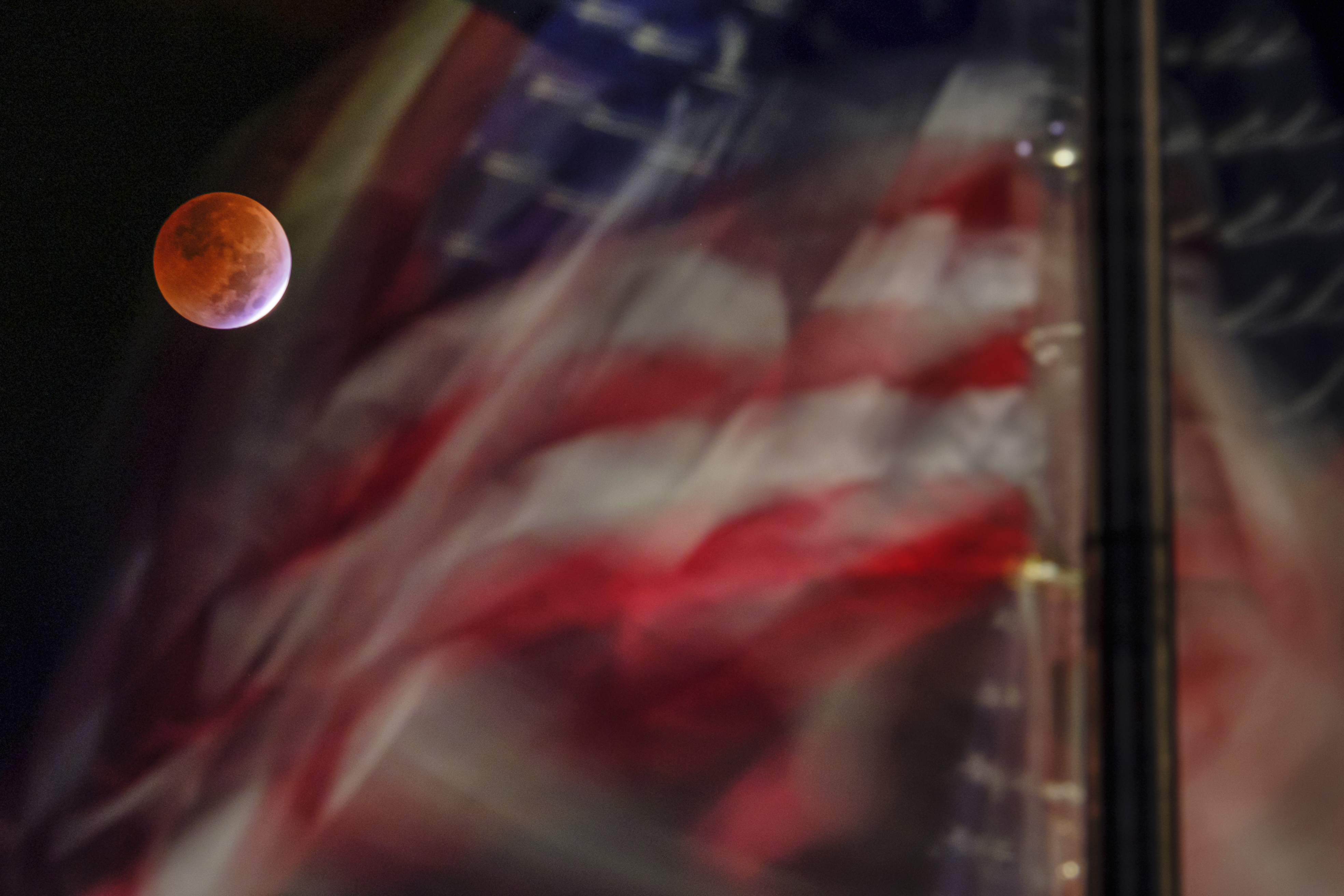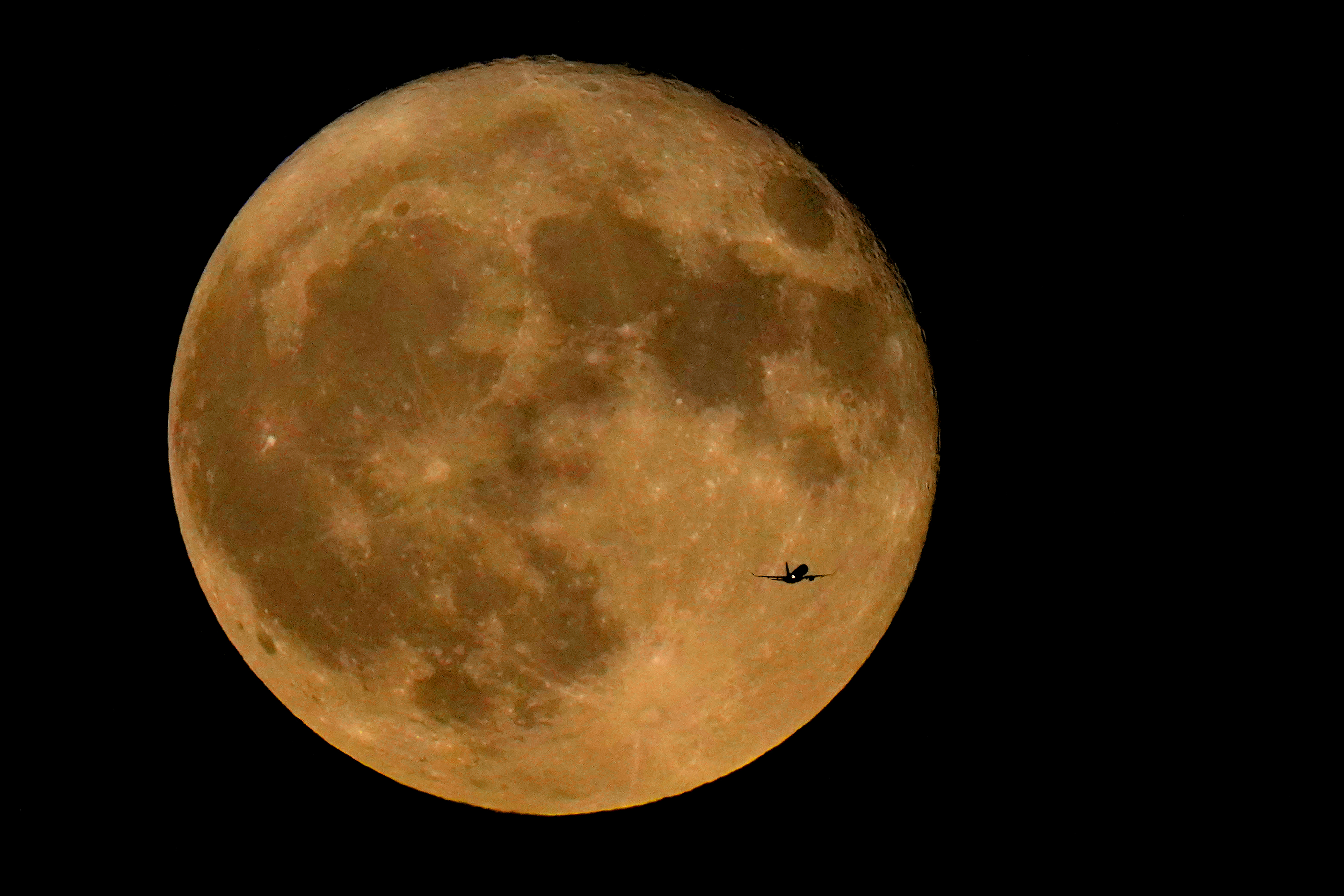
Astronomical fall is here — and winter, the best season for stargazing is fast approaching.
So, cue the apple picking, pumpkin carving and getting lost in corn mazes, as autumn symbolizes abundance and gratitude. Something new to add to the joy of the season: stargazing, especially as the days continue to get shorter.
New seasons mean new sights high above us, like the full moon coming up on Oct. 28. These sights can enhance the experience of the night sky, but the visibility is dependent on light pollution and cloud cover.
We talked to two experts — Guy Brandenburg, president and longtime member of the National Capital Astronomers, and Kim Arcand, a visualization scientist and co-curator of "Lights Out: Recovering Our Night Sky" at the Smithsonian's National Museum of Natural History — to get tips on stargazing in the D.C. area.
We're making it easier for you to find stories that matter with our new newsletter — The 4Front. Sign up here and get news that is important for you to your inbox.
Can you actually see anything in the night sky in DC?
As Arcand notes, no matter where you are in the world, something should be visible.
“Even in a very deep urban center, you've got the moon. And the moon is personally one of my favorite objects,” she said.
When you look at a map of D.C. on Dark Site Finder, you'll see the city is categorized as having the highest level of light pollution. This site uses 15 colors to depict the different levels of light pollution, with white as the brightest and black as the darkest (See how the site's color scale works.) The light gets dimmer the farther away you get from the Beltway, Brandenburg notes. So the farther out you go, the more you'll see.
Keep in mind: Cloud cover and dust in the air from wildfires can also impact visibility when stargazing. See the air quality here.
Get outside and attend a stargazing event
How do you stargaze in D.C.? You may want to go up on an apartment building rooftop or out to a spot without much upward obstruction, such as the National Mall. Arcand says the National Mall is actually a great place to observe the planets — plus it's home to the National Air and Space Museum.
“We all have the right to be able to enjoy those views, and to be able to participate in what our universe has to offer, and there are some lovely public observatories around us," Arcand said.
The National Air and Space Museum often hosts astronomy events, including Observe the Sun (with filtered telescopes); "The Sky Tonight," s planetarium show; and it annual Solstice Saturday in June. However, the museum’s Phoebe Waterman Haas Public Observatory is currently closed for renovations.
The museum’s Virginia outpost, the Udvar-Hazy Center in Chantilly, also offers astronomy programs, including stargazing events. Equipment is provided, and experienced members of the Northern Virginia Astronomy Club (NOVAC) and museum staff help visitors observe the sky.
In D.C.'s Rock Creek Park, the Exploring the Sky event has been welcoming amateur astronomers for 75 years. The event is coordinated by the National Park Service and the National Capital Astronomers (NCA).
If you attend, visit the planetarium at the nature center for a preview of what may be visible that evening. Afterwards, walk to the Military Meadow to join NCA members observing the sky with their telescopes.
Start with the moon and planets
The moon is a great place for beginners to start, Arcand say. Add "full," "super," "strawberry," "harvest," or even "blood" in front, and you’ve got a reason to stargaze.
The most recent events were late September's harvest moon, and a pair of supermoons in August. A supermoon is when the moon is at its closest to Earth while it's full. August had a rare blue moon — that's when a second full moon happens in the same month. D.C. had a view of the total lunar eclipse in November 2022, the last until 2025.
You can join the Steven F. Udvar-Hazy Center for moongazing in October, and take a look at NASA's Daily Moon Guide.
Once you tackle the moon, look for nearby planets as well. The way to tell a star from a planet is the "twinkle," or lack of one — stars twinkle, but planets don’t, Arcand said. At certain times of the year in areas with light pollution, Venus, which is a bright planet, can often be mistaken for a star, she said.
“Venus is going to be a lovely example for many people, regardless of where you are situated for much of the year," she said. You can also see "Jupiter, Mars, when it's nearby, and sometimes even Saturn, depending on your light pollution level."
Check it out: Storm Team4 Meteorologist Chuck Bell once spotted Venus and a waning moon above D.C.
Consider the season
Stargazing is a year-round activity, but you'll need to pay attention to the forecast and when star events will occur (see below for where to find what's visible in the sky.)
[W]inter just adds a little bit of a clarity to the atmosphere that makes, to me, the night sky viewing a little sharper and a little brighter.
Kim Arcand, visualization scientist and co-curator of "Lights Out: Recovering Our Night Sky" at the National Museum of Natural History
Fall may have the autumnal equinox and the harvest moon, but winter is the best season for stargazing, both Arcand and Brandenburg say. Just remember to bundle up for the cold temperatures.
“Things tend to be a little drier, you can get out a little earlier and the winter just adds a little bit of a clarity to the atmosphere that makes, to me, the night sky viewing a little sharper and a little brighter,” Arcand said.
If you stay up all night long in the winter, Brandenburg said, you will be rewarded with the “remarkable” view of the sky appearing to rotate around the north star. According to NASA, the north star, or Polaris, marks the geographic north and sits close to Earth’s North Pole. It’s not too hard to spot from a city and can help people orient their directions.
In January, Brandenburg often spots the Belt of Orion and the Big Dipper, two easily recognizable asterisms. An asterism is a prominent or familiar pattern of stars. They are often smaller than, or within, a constellation.
In the warmer months, Brandenburg likes to gaze at the moon and the summer triangle, an asterism made of the stars Vega, Altair and Deneb. He said these three bright stars are very obvious on summer nights in the area.
Heading into the summer, the days get longer. Some people in the area celebrate the summer solstice, which marks the astronomical first day of summer. Since the days are extra-long, Arcand recommends gazing at the stars closer to midnight for a better view of the night sky in the warmest months.
Do you need to use a telescope?
You won’t be able to see any galaxies with the naked eye while stargazing in D.C., Brandenburg said. With a regular telescope, he said more objects will be visible but will still be a challenge to view.
To get around this, Brandenburg said some members of the NCA stargaze with an eVscope, a telescope that uses magnification and image processing to provide a nearly real-time look at nebulae and galaxies. This modern telescope works better in urban areas such as D.C., because it was created to cut through light pollution, according to reviews.
If you're interested in creating your own telescope, Brandenburg leads NCA's telescope-making workshop.
Use technology
Knowing when and where to find planets and stars can be tricky. Newsletters, free star/planet finder apps and websites can help.
Brandenburg recommends the website What’s Out Tonight, which offers a sky chart, teaches users about the brightest stars and lists the best viewing times. Arcand recommends the websites Time and Date, Astronomy.com and EarthSky. They share info on what's visible in the sky, upcoming celestial events and informative newsletters.
The National Capital Astronomers (NCA) have a newsletter called Star Dust that shares astronomy news, upcoming events and what planets and/or stars can be viewed in the coming month in the D.C. area.
Be sure to check your phone's app store for handy stargazing apps, such as SkyView (App Store | Google Play) or Planets (App Store | Google Play). SkyView uses your camera and location to help you find nearby stars and constellations. Planets lets you aim your phone anywhere you want to show you a 360-degree view of planets and constellations around your location. Here's where to find more stargazing apps.
Visit a dark sky site
From meteor showers to asteroids, there are many celestial events that dazzle above D.C. but can't be seen because of light pollution. If you're ready to see the night sky in all its glory, venture to one of the dark sky sites nearby. The magnificence of the Milky Way will make the trip worth it.
"There are a couple of really lovely parks not that far outside of the D.C. area where you could get a glimpse of that richer detailed view of your own night sky," Arcand said.
About an hour from D.C., you'll find Sky Meadows State Park in Delaplane, Virginia. The park — which became an International Dark Sky Park in 2021 — hosts a monthly Astronomy for Everyone event. The 1,860-acre park's "unique, shielded landscape gives visitors the opportunity to view the stars away from higher levels of light pollution," according to a Facebook post.
Other Virginia state parks celebrate Dark Sky Week each year in April and also offer astronomy events such as a Harvest Moon hike and self-guided Dark Sky Nights.
“To get to anything like what you would think of as a dark sky, like you would see in a desert someplace without lights nearby, you have to go a long way, you have to go into West Virginia or northern Pennsylvania,” Brandenburg said.
About four hours from D.C. is Seneca State Forest, West Virginia, is known for the Thorny Mountain Fire Tower which brings visitors high above the woodlands for unparalleled views of the night sky. Go a little farther way from light pollution to the state’s International Dark Sky Park sites:
"It really inspires you with awe, at least me; it's so beautiful," Brandenburg said about stargazing.
Learn about light pollution
Light pollution is when artificial light on the ground clouds up the sky and blocks the view of stars, according to Arcand.
During the many centuries before the invention of artificial light, humans were used to having dark skies filled with stars, she said. Now, about a third of the world’s population cannot see the Milky Way, according to the website Lights Out: Recovering our Night Sky.
She said it is worth considering whether light pollution disconnects us from a part of our culture or our creative brains. If art, like The Starry Night painting by Vincent Van Gogh, would exist if there had been light pollution in the 1800s.

“We've had thinkers and artists, scientists, and just everyday people being able to depend on the night sky, either for navigation across seas, for being able to light the way at night by the light of a full moon, or just being able to inspire them,” she said.
Did you know? Georgetown University is home to the third-oldest observatory in the U.S. The Heyden Observatory was built in 1844 and closed in 1971 due to light pollution.
Light pollution negatively impacts wildlife and disrupts the flight patterns of many birds. Lights Out D.C., a volunteer group featured in the Smithsonian’s Sidedoor podcast, said they collect hundreds of dead birds that fly into office buildings during the migration season.
"It's really a problem for not just us astronomers being selfish because we like to see the stars, but every living creature that includes plants, as well as animals, is profoundly affected by light," Brandenburg said.
Visitors can explore the potential downsides of light pollution and how much light humans need at the Lights Out: Recovering our Night Sky. exhibit until Dec. 2025.
A quick guidebook for stargazing in the DC area:
Clubs:
- National Capital Astronomers
- Northern Virginia Astronomy Club (NOVAC)
- Astronomical Society of Greenbelt
Places:
- Rock Creek Park, Washington D.C., Exploring the Sky
- The National Mall, Washington D.C., Solstice Saturday
- Fairfax County Parks, various events
- National Air and Space Museum, Washington, D.C. various events
- Steven F. Udvar-Hazy Center, Chantilly, Virginia, various events
- Seneca State Forest, West Virginia
- Sky Meadows State Park, Delaplane, Virginia
Planetariums:
- Rock Creek Park Planetarium, Washington, D.C.
- David M. Brown Planetarium, Arlington, Virginia
- Air and Space Museum Planetarium, Washington, D.C.
Observatories:
- George Mason University Observatory, Fairfax, Virginia
- Greenbelt Observatory, Greenbelt, Maryland
- Several observatories in the D.C. area are temporarily closed to the public.
Exhibits:
- Goddard Visitor Center exhibits, Greenbelt, Maryland
- Lights Out: Recovering Our Night Sky., Smithsonian National Museum of Natural History, Washington, D.C.
- ARTECHOUSE's "Beyond the Light," Washington, D.C.
Do you see something that should be in this guide? Email tips@nbcwashington.com and/or share your stargazing photos at #4theScene.



